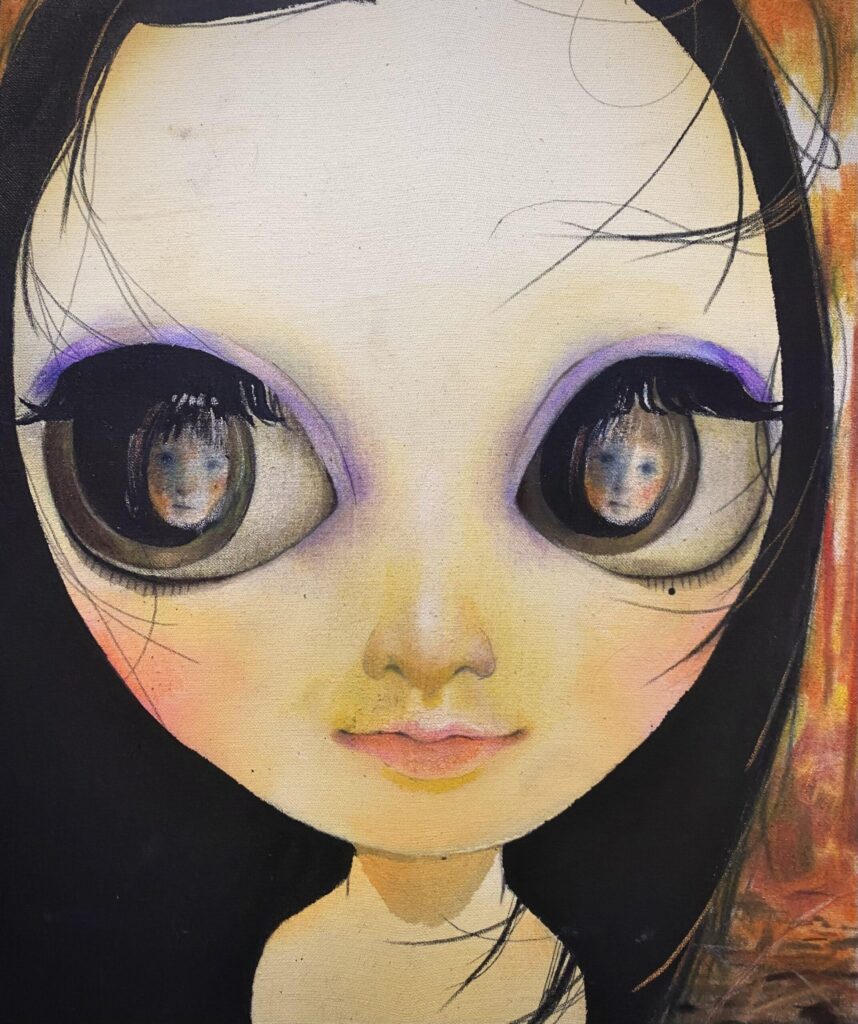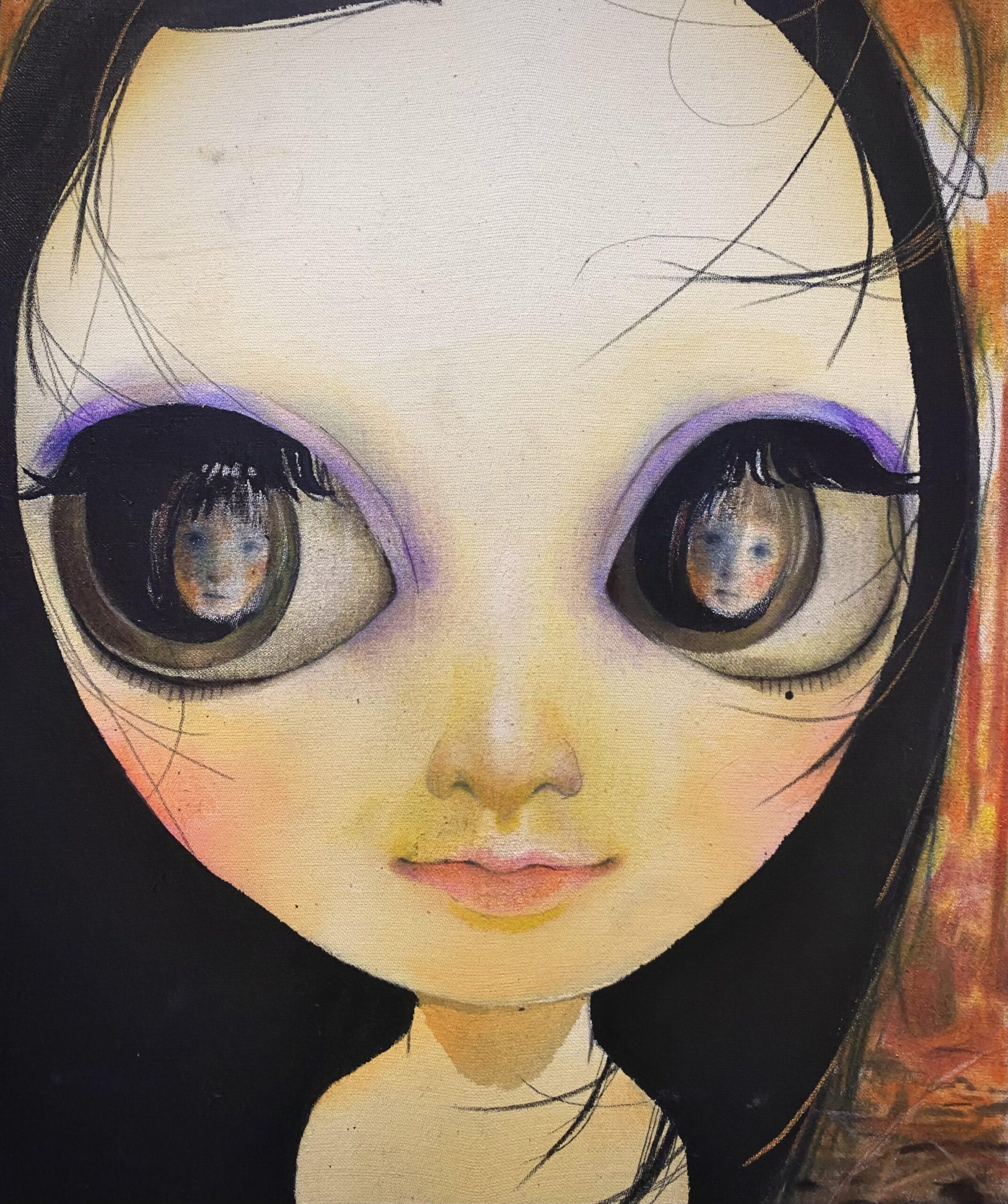Opening Statement
aaploit is pleased to present “I Am Probably Not the Right Voice for These Paintings” (私は、これらの絵のよき語り手ではないだろう), a solo exhibition by Ishiguro Hikaru, running from October 3 to October 19, 2025. This exhibition invites visitors to discover works that resist the contemporary urge for immediate understanding, instead offering encounters with painting as encrypted presence—forms that breathe with meaning beyond explanation.
Ishiguro’s practice emerges from a deliberate resistance to our era’s demand for interpretive speed. In a cultural moment that prioritizes rapid comprehension and closes questions in the name of resolution, these paintings steadfastly refuse such containment. They propose instead a different temporal relationship with artistic meaning, one that unfolds through silence, subtle trembling, delay, and the gaps that open between expectation and encounter.
The exhibition’s title acknowledges the fundamental inadequacy of words when confronted with painted presence. This acknowledgment becomes not a failure but a productive space—an invitation for viewers to develop their own relationships with works that exist beyond the reach of perfect articulation.
Exhibition Concept: The Resistance of Encrypted Form
When spirit entrusts itself to matter, it becomes more than mere representation—it begins to breathe as cipher, as encoded presence that painting uniquely manifests. Ishiguro’s works will transform the aaploit gallery into a space where such encrypted forms await patient encounter rather than quick decoding.
Visitors will discover paintings that operate through what the artist describes as “asynchronous relationships”—temporal disruptions that create distance from thought patterns oriented toward immediate answers. The works establish their own rhythms of revelation, inviting viewers to slow down, to sit with uncertainty, to allow meaning to emerge through sustained attention rather than rapid interpretation.
The exhibition anticipates questions about contemporary painting’s capacity to resist the accelerated pace of digital culture. These works suggest that painting’s particular materiality—the way pigment settles into fabric, how brush marks retain their temporal traces, the physical presence of surface and texture—creates possibilities for meaning that unfold according to different temporalities than those governing screen-based experience.
Through careful attention to materials and process, Ishiguro creates works that invite contemplation rather than consumption. The paintings will occupy the gallery space as presences that reward patience, suggesting that some forms of understanding require time to develop, like photographic images slowly appearing in chemical baths.
Artistic Practice: Material Investigation as Temporal Resistance
Ishiguro’s methodology centers on materials that carry their own temporal histories and resistances. Working primarily with cotton fabric, art glue, ink, and traditional water-based mineral pigments (suihi-enogu), the artist creates surfaces that record the time of their making while remaining open to continued transformation.
The choice of cotton fabric as foundation speaks to the artist’s interest in surfaces that retain memory—textiles that have existed in the world, absorbed ambient moisture, responded to seasonal changes, before becoming supports for painted investigation. This material history becomes part of the work’s meaning, suggesting that painting begins not with blank surfaces but with matter already encoded with temporal experience.
Ishiguro’s application of traditional Japanese pigments through contemporary approaches creates works that exist between historical technique and current investigation. The water-based minerals interact with cotton and glue in ways that cannot be entirely controlled or predicted, introducing elements of chance and process that resist the artist’s complete authorship. This material collaboration becomes central to the work’s meaning—painting as encounter between human intention and material agency.
Studio insights reveal an artist committed to what might be called “productive failure”—the acknowledgment that painting’s deepest achievements often emerge through processes that exceed conscious planning. Ishiguro approaches each work as an investigation rather than execution of predetermined vision, allowing the materials and process to contribute to meanings that emerge through making rather than preceding it.
Spatial Transformation: Gallery as Contemplative Environment
The aaploit gallery will be transformed into an environment conducive to the slow time that these paintings require. Rather than presenting works as objects for rapid visual consumption, the installation will create spaces for sustained attention, where viewers can develop relationships with individual pieces that deepen through extended viewing.
Visitors will encounter paintings positioned to reward close examination of material qualities—the way ink spreads through cotton fiber, how mineral pigments settle into fabric texture, the subtle variations in surface created by the interaction of wet and dry media. These intimate material encounters will be balanced with opportunities to experience the works’ collective presence, their dialogue within the shared space.

Key works, including “Dauntless Accomplice” (果敢な共犯), demonstrate Ishiguro’s investigation into how painted surfaces can maintain productive ambiguity. The modest scale of these works—often around 370 × 313 mm—creates intimate encounters that require viewers to approach closely, establishing personal relationships with each piece that resist the distancing effects of spectacular presentation.
Critical Context: Painting in the Age of Acceleration
These works position themselves within contemporary debates about painting’s relevance in an increasingly digitized culture. Rather than competing with screen-based media through spectacular scale or technological innovation, Ishiguro’s practice proposes painting’s unique capacity to operate according to different temporal logics—what the artist calls “non-synchronous relationships” that create space for reflection and uncertainty.
This approach connects to broader artistic investigations into resistance and presence in contemporary Japanese painting. While maintaining connection to traditional material knowledge—particularly in the use of mineral pigments and attention to material properties—Ishiguro’s practice addresses distinctly contemporary questions about attention, time, and meaning in accelerated cultural conditions.
The exhibition will demonstrate how painting can function as cultural counter-practice without becoming reactionary or nostalgic. These works acknowledge contemporary conditions while proposing alternative ways of experiencing time and meaning through sustained material encounter. They suggest that painting’s particular combination of physical presence and interpretive openness creates possibilities for experience that remain relevant precisely because they resist easy digital reproduction or rapid consumption.
International audiences will discover in these works a distinctly Japanese approach to material patience and productive ambiguity, while recognizing broader questions about artistic resistance to accelerated culture that resonate across contemporary practice globally.
Artist Information
Ishiguro Hikaru represents a significant voice among contemporary Japanese painters investigating the intersections of traditional material knowledge and current cultural conditions. The artist’s practice emerges from sustained investigation into how painting can maintain relevance and meaning in rapidly changing technological and social environments.
Ishiguro’s educational background and artistic development have been shaped by deep engagement with both traditional Japanese painting techniques and contemporary artistic discourse. This dual foundation enables the creation of works that honor historical material knowledge while addressing distinctly contemporary questions about time, attention, and meaning.
The artist’s current research focuses on what might be called “temporal resistance”—investigating how painted surfaces can operate according to different time structures than those governing digital culture. This investigation manifests through careful attention to materials that carry their own temporal histories, process-based approaches that introduce unpredictable elements, and presentation strategies that reward sustained rather than rapid viewing.
Ishiguro’s work represents broader developments in contemporary Japanese painting toward practices that engage critically with accelerated culture while maintaining connection to traditional craft knowledge. The artist’s investigations into productive failure, material collaboration, and interpretive resistance position this practice as significant contribution to current discourse about painting’s continuing relevance and possibility.
Exhibition Details
“I Am Probably Not the Right Voice for These Paintings”
Artist: Ishiguro Hikaru
Dates: October 3 – October 19, 2025
Hours: Friday, Saturday, Sunday 13:00-18:00
*Private appointments available on weekdays
Venue: aaploit
TMK Building 2F, 1-21-17 Sekiguchi, Bunkyo-ku, Tokyo
Inquiries: info@aaploit.com
Web: https://en.aaploit.com/i_am_probably_not_the_right_voice_for_these_paintings
